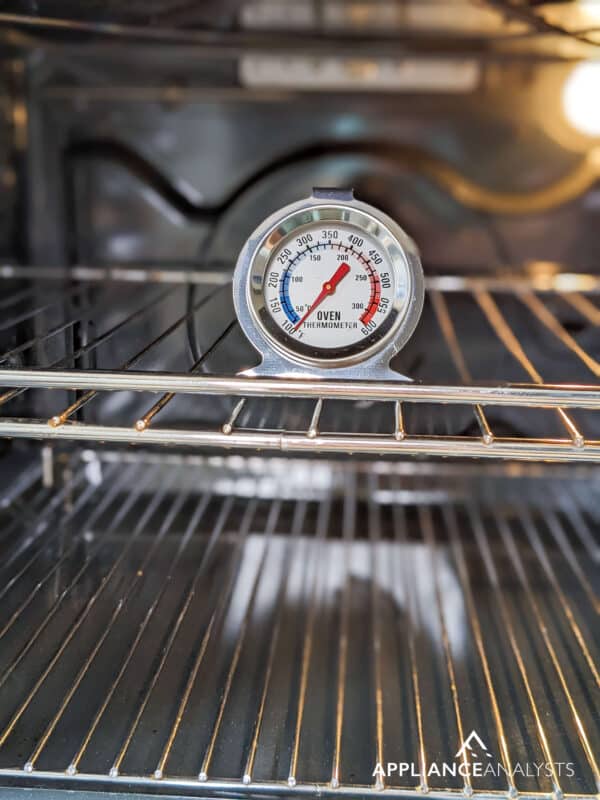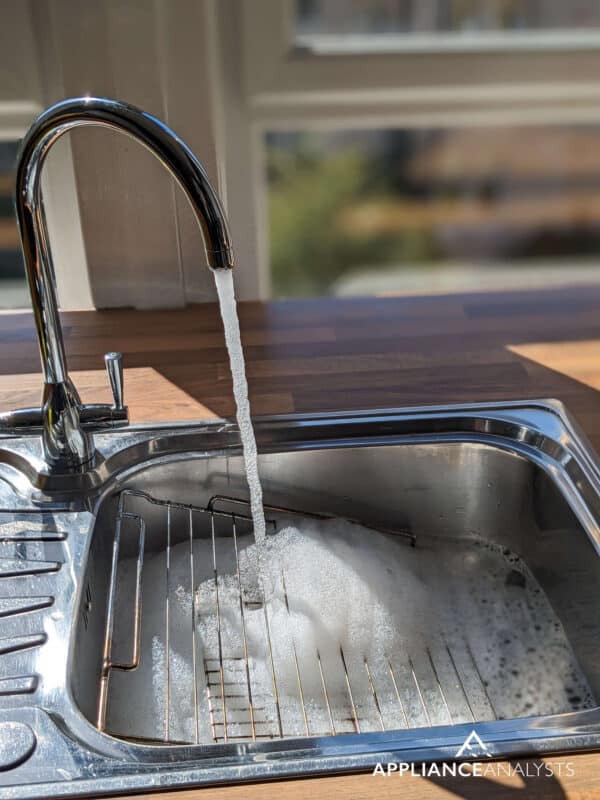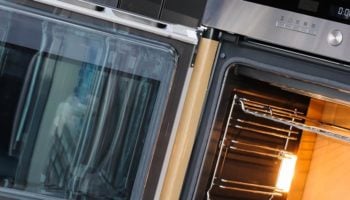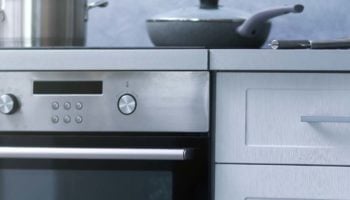We've independently reviewed this article to make sure it's as accurate as we can make it.
To find out more about our article creation and review process, check out our editorial guidelines.
Wondering how much an oven costs to run?
Understanding the running costs of your oven is crucial, especially since electricity prices have increased by 15% in the past year alone.
Luckily, you’ve come to the right place! In this article, you’ll learn how much it costs to run your oven and different ways to reduce the amount.
On average, running a medium oven of 2,400 watts for one hour daily costs around $11.1 per month or $133.2 per year. However, the cost can vary depending on different factors, such as the electricity rate in your area, the size and wattage of your oven, and how frequently you use it.
Ready to learn how much it costs to run your oven? Let’s get started!
Why trust us? This article was written by Craig Anderson and James Blackford.
Craig has helped thousands of other homeowners repair their appliances since 2016.
James is one of our resident appliance experts with over 16 years of experience. He currently works as a Master Technician for SquareTrade, and runs his own appliance repair business.
How I’ve Estimated Oven Running Costs
If you love digging into the numbers as much as I do, you’re probably curious about how I created the calculator above to estimate your oven’s running costs.
I took into account the electricity cost in your area, the power rating of your oven, and the hours your oven is used per day.
First, I multiplied the electricity cost by the power rating of your oven and then multiplied the result by the number of hours your oven is used per day. With this calculation, I then estimated the monthly cost.
Don’t forget that the actual cost of running your oven will vary depending on factors such as the size and wattage, the frequency of use, and the electricity cost in your area. So, if you love baking, it’s worth noting that your oven’s running costs can be higher than someone who doesn’t use their oven as frequently.
But don’t worry; you don’t have to sacrifice your love for baking to save on your energy bill. Keep reading to learn how to reduce your oven’s running costs.
How to Lower Your Oven Running Costs
Now that you know how much it costs to run your oven, it’s important to learn how to make the most out of it.
Keeping your oven well-maintained not only saves you money on running costs but also makes it last for many years to come.
Make sure to check out our complete oven maintenance & care guide to keep your appliance running efficiently!
#1 Cook Wisely
If you’re looking for ways to reduce the running costs of your oven, I’d first recommend cooking multiple dishes at once to reduce the time your oven needs to be on.
Please use small, thin, or compact cookware to help speed up cooking times, ensure better heat distribution, and reduce your oven’s energy consumption.
Cast iron, ceramic, stainless steel, silicone, and glass are typically safe materials for cooking and baking. However, it’s always important to look for an “oven-safe” symbol before using any cookware in the oven to ensure its safety.
While it can be tempting to peek inside the oven to check on your delicious baked goods, doing so can cause heat to escape and reduce the internal temperature.
Opening your oven while cooking forces it to work longer and harder to cook your food, resulting in higher energy bills.
So, please avoid opening the oven door to check on your food. Try looking through the glass instead. And please don’t forget to inspect the door seals regularly to avoid heat loss.

It’s also important to preheat your oven for the right amount of time to ensure that your food cooks efficiently. Generally, preheating your oven for about 12 minutes is enough for most recipes.
Preheating for longer can cause your energy bill to skyrocket!
Lastly, if your oven has a fan setting, please use it to help circulate the hot air in the oven and reduce the cooking time.
#2 Plan Ahead
I find that planning ahead your meals can also be a great way to lower your oven running costs.
For example, if you want to cook a small piece of food, you can use a different appliance, such as an air fryer, since smaller appliances are typically more energy-efficient than a full-sized oven.
Now, let’s say you want to cook a frozen piece of meat. If you don’t thaw it beforehand, your oven will need to run longer to cook it, using more energy and increasing energy bills.
Try thawing frozen food in the fridge for 12 to 24 hours before cooking it in your oven.
Never thaw food at room temperature, as this creates the perfect environment for bacteria to grow.
I also recommend turning off the heat before your food is fully cooked so the residual heat in the oven can continue to cook your food without using additional energy.
You can also use that residual heat to cook a quick meal or side dish, such as vegetables.
Extra tip: By leaving the oven door open after cooking, you can replace your home’s heating system for a couple of hours and save a few extra bucks in heating.
Just bear in mind that leaving the door open isn’t recommended if your fridge is nearby, as it can make it work harder to keep your food cool.
#3 Check the Temperature
Another way to lower your oven’s running costs is to ensure the thermostat works correctly.
You see, if the thermostat is faulty, your oven can run longer than necessary, resulting in higher energy bills.
To check your thermostat, you just have to place a small pan inside the oven and set a particular temperature. Then, let the oven heat up and carefully open the door.
Use an infrared thermometer to ensure the temperature of the pan is within 10 degrees of the set temperature. If it’s not, you’ll need to replace the thermostat.
Otherwise, you can also end up with overcooked or undercooked food and costly repairs.
Tip: You can also place an oven thermometer inside.

#4 Clean It Regularly
Last but not least, to lower your oven’s running costs and ensure its efficiency, you’ll need to clean it regularly.
In my experience, grease, dirt, and grime buildup can reduce the oven’s ability to heat up quickly, which can lead to higher energy bills, unpleasant smells, and costly repair costs.
To clean your oven, you’ll need to:
- Remove any racks, trays, and other accessories that aren’t part of the oven.
- Spray a degreaser on the sidewalls, racks, and trays and let it sit for 20–30 minutes.
- Use a scraper to remove any stubborn debris, and wipe down the interior with a damp cloth. Don’t forget to clean all the removable parts with warm soapy water.
- Let the oven dry before closing it to prevent mold growth.
- Wipe down the exterior with a clean damp cloth and remove any grease spills.

If your oven has a self-cleaning feature, and you want to save extra money on your energy bills, avoid using it. The self-cleaning feature heats the oven and burns any food residue left inside, increasing your energy bills. Try sticking to regular cleaning instead.
Wrapping Up: Understanding and Reducing Oven Running Costs
Hopefully, now you understand the running costs of your oven.
Remember, leaving the oven’s door closed while cooking, thawing your food 12 hours before using your oven, checking the thermostat, and cleaning the oven regularly can help you lower the running costs.
Don’t forget to take a look at our free Appliance Challenge to find helpful guides on how to make the most out of all your appliances and save over $1,000 per year!
Thanks for reading, have a wonderful rest of the day.







